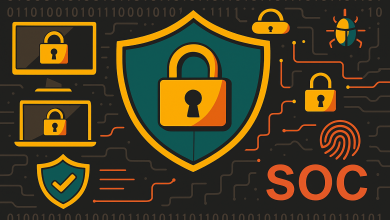With ransomware and cyberattacks at an all-time high, global organisations should be on alert unlike ever before. While many IT teams can confirm that a ransomware attack is almost inevitable, this is not the only concern for 2022. Cyberattack methods, the scale of their imposed damage, and ways in which to combat them grow increasingly more volatile and complex from year to year. IT teams and security professionals must be as vigilant as possible to protect their organisations going forward.
Continuing into 2022, cybersecurity concerns and the need for effective cyber defences are expected to intensify. Here are six IT trends likely to affect global cybersecurity. Organisations should keep them in mind when assessing risks and updating their IT environments in a timely manner.
1. Increases in legislation due to incidents at private companies risking national security
In case of ransomware and other cyberattacks, targeted companies or individuals are not the only victims anymore as these attacks can now affect entire cities and regions. For example, an attack targeting a company supplying fuel or food could result in long waiting times at gas stations or empty shelves at local supermarkets.
As a result, more stringent security requirements for private organisations in critical sectors are to be expected. On the other hand, governments may choose to enact tax breaks that incentivise organisations to invest in their own cybersecurity. Additionally, notification rules will likely be affected, and as for appropriate further legislation enhancement – more visibility into cyberattacks is needed.
2. Increased costs and security standards of cyber insurance policies
As insurance pay-outs have become more expensive and more commonplace, the price of cyber insurance is skyrocketing. Prices have risen to 96 per cent in the US and 73 per cent in the UK during the third quarter of 2021 when compared to the same quarter in 2020 – and are still continuing to do so.
Stakeholders can expect further increases in 2022. As a result of the global increase in the frequency of attacks, insurance policies will require the use of critical controls that lower the risk of cybersecurity incidents. By design insurance is meant for rare catastrophic events, that is why insurance companies will pay-out in exceptional circumstances only while ransomware attack is a kind of trivial event nowadays.
3. Further attacks towards MSPs in order to access government agencies and corporate networks
Cyber attackers have utilised successful strategies to infiltrate large organisations and their data assets through comparatively weaker IT infrastructures of their contractors – SMBs who provide them with services. Due to this, managed service providers (MSPs) will need to increase the scope of their security measures, as many SMBs rely upon them on security.
4. Implementing post-quantum encryption standards
Many of today’s cryptographic algorithms heavily depend on the idea that there is no processor strong enough to be able to crack them in a reasonable amount of time. However, quantum computing can allow such a processor to exist. While this technology is still far from any practical application, the concern is deepening. For example, the U.S. announced export controls onto eight different Chinese quantum computing companies due to worries over China’s ability to break encryption. As the technology advances, further implementation of post-quantum encryption standards can also be expected.
5. Corporations made accountable for the potential dangers of machine learning
It is known that 59 percent of large enterprises have already implemented data science (DS) and machine learning (ML) technologies, equally bringing their own risks as well as benefits. ML algorithms are particularly susceptible when in the learning phase, as bad actors can interfere with the input in order to sabotage the results. This can break critical processes, with the potential to put lives at risk in some cases, for instance, by affecting traffic lights within a smart city or healthcare devices. Organisations using ML should further educate themselves regarding such threats and strengthen their efforts to effectively protect against them.
6. Cybercriminals using residential Wi-Fi networks as part of their malware campaigns
Home networks have become an attractive target for cyberattacks as they are far easier to infect with malicious software than a professionally secured enterprise IT environment. With processing power and bandwidth connectivity in residences increasing, bad actors will continue to utilise home networks to carry out their attacks.
By infecting numerous devices, cybercriminals can then change IP addresses and even domain names during malware campaigns, which are used to obstruct common defenses such as IP blocking and DNS filtering. IT teams should keep this new threat vector in mind when reviewing their security strategies and incident response plans. Additionally, the IT industry should seek to increase user awareness and best practices adoption to mitigate this ‘easy prey’ tendency.
Organisations cannot equally protect all the data they store from all possible threats. It is crucial to identify the most important information and concentrate cybersecurity efforts on the most likely incidents. Stakeholders should not let cyber insurance lull the anxiety – it is not a method of protection. Cyber resilience is based on a risk assessment which is still the full responsibility of an organisation.



